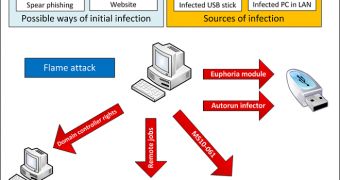For the past couple of days or so, the media and the security industry have been buzzing over the existence of what many have called the new Duqu, or the new Stuxnet.
However, after a good night’s sleep and additional research, a number of experts have come to realize that Flame isn’t something that should make us panic, at least not yet.
After further analyzing Flame/Flamer/SkyWiper, Trend Micro researchers have concluded that it’s not so dangerous as initially believed.
First of all, the number of actual victims is low, and the targets are confined to the Middle East and some regions in Africa.
Trend Micro’s Rik Ferguson notes that there are a couple of aspects that make Flame somewhat different compared to the rest of the pack. One of them is the fact that it’s 20 megabytes in size.
The other is that it has been written in the Lua programming language, which makes the threat unique in terms of malware. Finally, there’s the Bluetooth functionality that makes it stand out.
On the other hand, the fact that many of Flame’s targets are in the Middle East doesn’t necessarily mean that it’s the next Stuxnet.
Security experts see the potential risks posed by the new malware, but that can happen only if it is repurposed for broader attacks.
Nevertheless, the United Nations might know something more since, according to The Telegraph, Marco Obiso, cybersecurity coordinator of the UN International Telecommunications Union, described it as “the most serious warning” ever issued.
In the meantime, while we wait to see if the Flame does become the next Stuxnet, security solutions providers are busy updating their products to ensure that all the newly identified command and control servers utilized by the threat are blocked.

 14 DAY TRIAL //
14 DAY TRIAL //